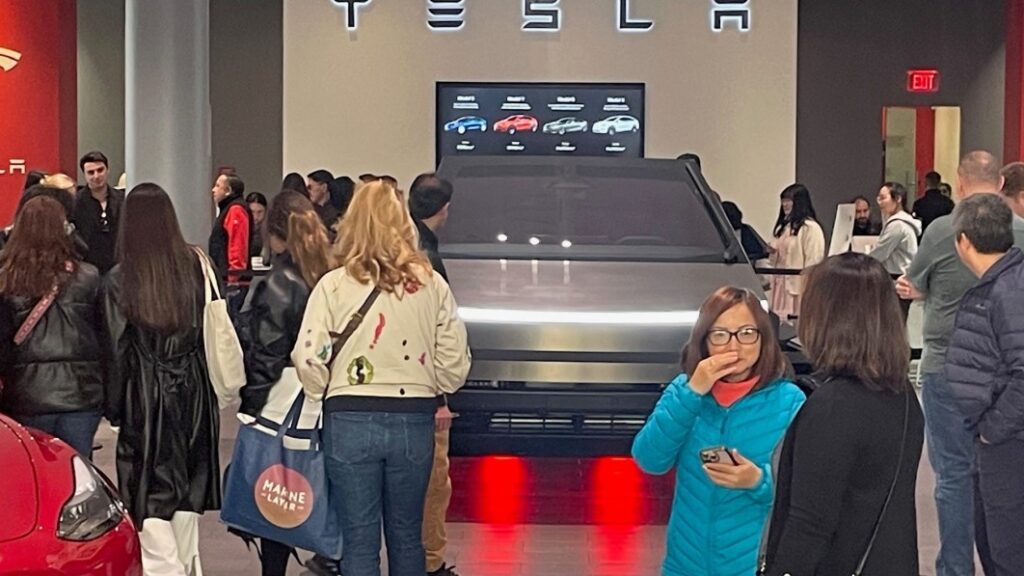Elon Musk may take a page from Ferrari's playbook with Tesla's Cybertruck

The Cybertruck is the most divisive vehicle launch in at least a decade.
Wall Street analysts see limited supply in 2024 and maybe even in 2025.
Tesla will probably sell every single Cybertruck it makes in 2024 and 2025. That may not amount to many vehicles, though.
CEO Elon Musk could be taking a page from Ferrari’s playbook by limiting supply, at least initially, to create scarcity value and keep prices high.
This is also what sometimes happens with big new iPhone launches, when Apple ramps up production slowly, and fans are left fighting to get their hands on the latest technology.
The Cybertruck is the most divisive new vehicle in at least a decade. People either hate the angular design or they love it. Then there’s Musk’s controversial comments, which may have alienated some potential buyers, in addition to challenges scaling up manufacturing.
Wall Street’s Cybertruck forecasts
Wall Street expects Tesla to sell about 48,500 Cybertrucks in 2024. That’s the average of recent forecasts from analysts at Goldman Sachs, Morgan Stanley, UBS, Bernstein, and Wedbush.
“Consensus delivery forecasts need to come down in part because we expect initial production to be challenging,” the UBS analyst Joseph Spak wrote in a recent note to investors. “Cybertrucks available in 2024 may be more ‘statement vehicles'”
Goldman analysts reckon that in 2025, Tesla will deliver 150,000 Cybertrucks. Wedbush sees 230,000 being sold that year.
Morgan Stanley sees only 78,000 Cybertrucks being sold in 2025, for a total of just 108,000 vehicles over the next two years. That’s compared with more than 1 million reservations, for which people put down deposits of $100. Even if 80% of these consumers cancel their reservations, that’s still 200,000 purchases.
‘Ferrari’s playbook’
If only 108,000 Cybertrucks are delivered in 2024 and 2025, that means demand could significantly outstrip supply in this early period.
“Will Tesla take a page out of Ferrari’s playbook of limited series production?” the Morgan Stanley analyst Adam Jonas wrote in a recent research note. “The company may decide to purposely limit series production to maintain scarcity while focusing company resources on more profitable products.”
Jones cited examples from automotive history, such as Aston Martin producing 645 units of the Lagonda and Ferrari limiting Daytona SP3 output to 599 units.
Jonas also noted that from Elon’s whacky world, collectors could find limited edition bottles of “Teslaquila” and pseudo flamethrowers from the Boring Company for sale on eBay for thousands of dollars.
Of course, Cybertruck demand could collapse more than analysts expect. Wall Street can be overly bullish when it comes to public companies. There are also concerns about the rising price tag of the trucks and doubt about how insurers will cover this unusual steel beast of a vehicle.
‘A Machiavellian marketing play?’
One way to manage such uncertainty is to limit supply early on.
When Apple launched the iPhone X, it had some radical new features and a surprisingly high price, similar to the Cybertruck situation.
When that smartphone first came out in 2017, supply was relatively scarce at first. Christopher Mims from The Wall Street Journal wrote a smart column back then on Why There Are Never Enough New iPhones.
“Are these shortages some kind of Machiavellian marketing play? Calculated risk management?” he wrote. “Or is it the case that manufacturing millions of complex electronic gadgets, and distributing them globally, is really hard? It’s likely a bit of all of these.”
Mims interviewed Asokan Ashok, a former Samsung executive who saw many flagship products go from the lab to the consumer. Ashok said the preorder mechanism, through which customers signal their intent to buy, provided early data that was essential to predicting demand for complex new products that were hard to make and distribute globally.
That certainly applies to the Cybertruck.



